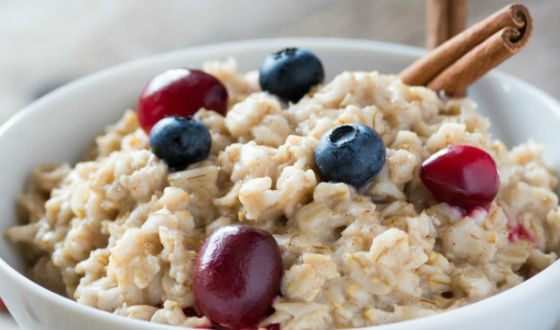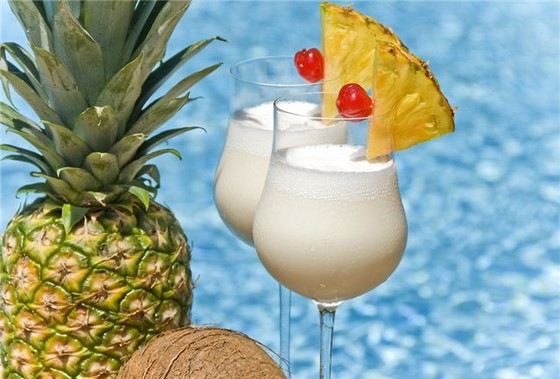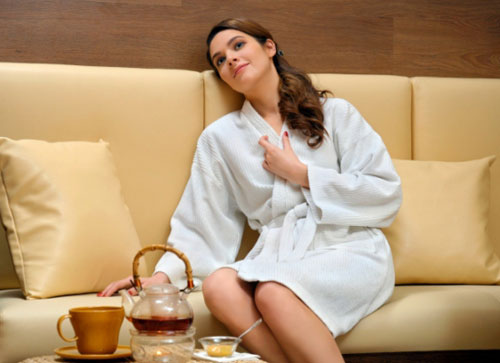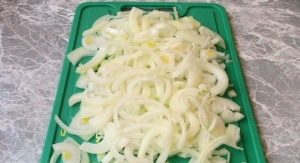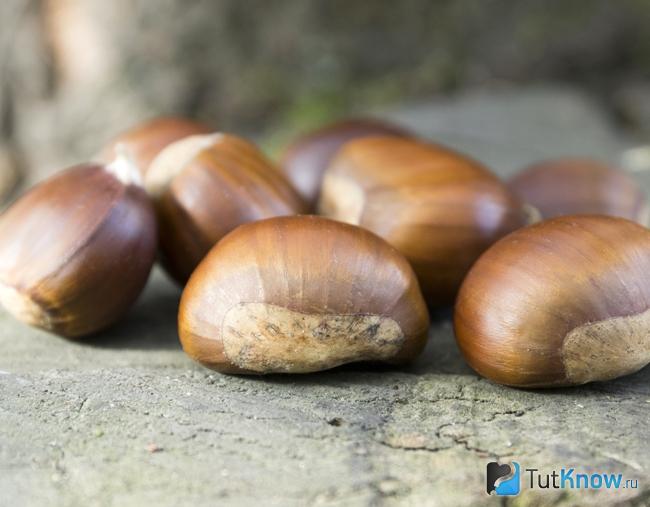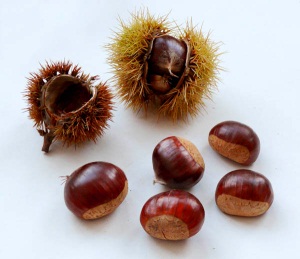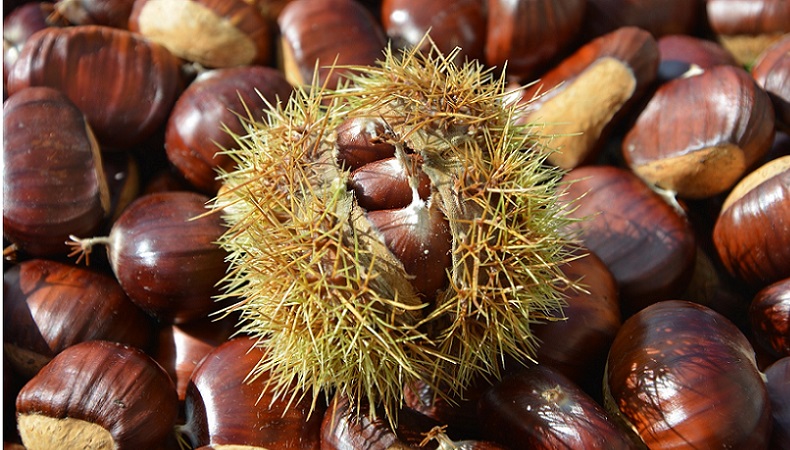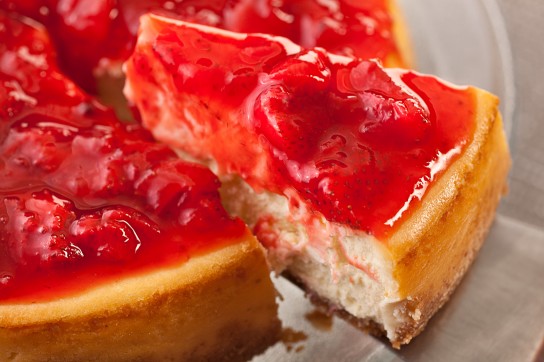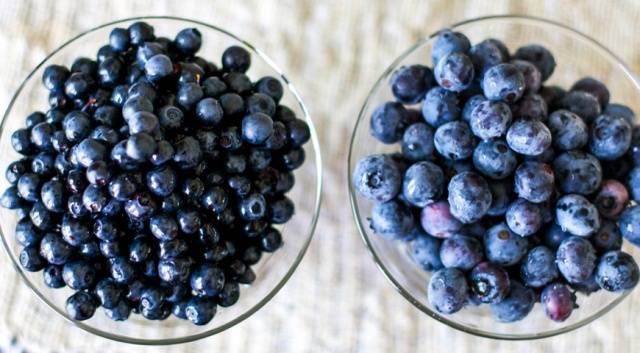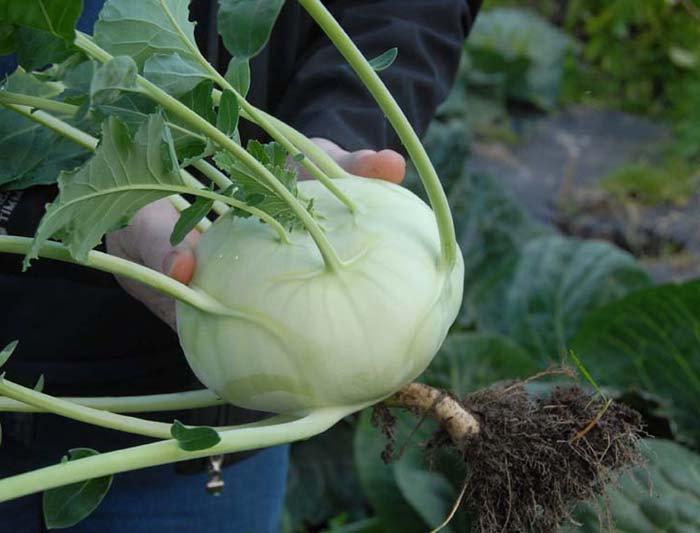What the French love and dislike. What do the French eat
France, of course, is a gastronomic country, famous for its high cuisine, and cafes and restaurants have the same symbol as the tower of Monsieur Gustave Eiffel. However, an interesting question that interests many, is how with such an abundance of sauces and desserts, the French continue to be one of the most harmonious nations in the world.
Do not forget that the dishes served in gourmet restaurants are significantly different from the products that the French consume in daily life, but there are several features of the diet that do not change for generations. My friend and I recently sat down and listing to each other who noticed something during the year of living in France. Surely you will have other observations. We proceeded from the way our friends and friends of friends eat. So let's go!
1. Food by the clock
Despite the arguments of scientists calling for fractional five meals a day, every real Frenchman traditionally eats 3 times a day. For breakfast in France, toasts or pancakes with butter and confiture are taken. Lunch is a sandwich and a small cake from the nearest bakery or a set menu in a cafe. Dinner is diverse and depends on the tastes of a particular family.
2. Cheese for dessert
French love for cheeses is not a cliche, but a feature of national thinking, which has been taught since childhood. Each child is able to determine the type of cheese by appearance and smell and tell how and with what to combine it correctly. And yet, cheese is a dessert that is customary to eat with fruits, berries or nuts after dinner or Sunday lunch, and not in the form of a sandwich for breakfast, as they like in Russia.

3. Bread and water
Baguette and a jug of water are always present on the French table. Most often this is plain tap water, which you and the restaurant will definitely bring for free along with a baguette cut into a wicker basket. By the way, the consumption of water during meals is another habit that runs counter to modern nutritional rules, according to which you should not drink during meals and immediately after it.
4. Late dinner
In most French families, an evening meal begins around 20 hours and, according to recent studies, more and more often goes to watch your favorite TV shows. However, despite such a nutritional schedule, the presence of fresh vegetables and greens in the diet helps the French stay in shape. Leaf lettuce is another must-have in every refrigerator. It is most often eaten simply with olive oil and vinegar, sometimes adding cherry tomatoes and grated wet.

5. Quality in favor of quantity
In this confrontation, quality always prevails. An early Sunday morning trip to the market, leisurely conversations with sellers, the choice of only the freshest farm products - this is a mentality that is drowned out by a trip to the nearest supermarket only in case of emergency. And no semi-finished products. The culture of semi-finished dishes is alien to the true French. But the fashion for bio-products that are grown on ecologically clean fields is becoming more widespread.
6. Coffee every day
Black coffee in France is more than a drink. Everyone drinks it, always and everywhere. In the morning, the French descend after him to the nearest cafes or bakeries, drink it during the day to cheer up, have a snack if there is no time to have a bite, and, of course, after a meal. By the way, ordering coffee after lunch or dinner is perhaps one of the basic rules of French etiquette. Moreover, the more expensive the restaurant in which you have lunch, the more rigorously this rule is observed.

7. A clear sequence of dishes
No matter how busy modern life is, serving and serving dishes are observed impeccably: a light vegetable salad with vinaigrette dressing, main course, fruits and cheeses for dessert. It is worth noting that the French never eat fruit and berries separately as a snack, only occasionally combining them with cookies during an afternoon snack. But it is rather the prerogative of children and adolescents. Adults have a cup of strong black coffee.
8. The minimum amount of time at the stove
Daily nutrition is very different from high French cuisine, where a lot of energy and attention is paid to the cooking process. In the everyday life of the average Frenchman, the time allotted to stand at the stove is limited to twenty minutes. This is due to their love of fresh, thermally unprocessed products, which they perfectly combine with meat snacks. Ham, raw smoked sausage, pastes and all kinds of cured meats occupy an important place in the diet of a real Frenchman, and fish and meat steaks are more likely the main course of the day.

9. With friends and without
The well-known French concept of "savoir vivre", the ability to live, of course, includes a culture of food. This is not just a process of absorbing food in order to saturate the body with vitamins and minerals, but also a pleasure that can be enjoyed alone on the sunlit terrace, or in the company of friends and colleagues at a large table. Another feature of the French mentality is the so-called "aperos", aperitifs to which they like to invite to their home. In this case, all kinds of chips, nuts, sliced \u200b\u200bcheeses and other snacks are put on the table.
10. Glass of wine
If you think that the idea of \u200b\u200bwine is limited to the simple rule "white for fish, red for meat", you are mistaken. The French choose wine not only for each specific dish, where even the served sauce can change the choice of a drink, but also for the event, time of day, and temperature outside the window. Every resident of France must have at least a small wine stock, his own collection, which is constantly growing along with rising incomes and the standard of living of the Frenchman.
The question is asked, I answer: because they eat differently. No better and no worse, but just different. How? We’ll talk about this.
No, how unfair it is! French cuisine is rich in both fats and carbohydrates. In addition, the French relate to bread with reverence, and French cinema is densely “stuffed” with scenes of lunches and dinners, where no one refuses anything to himself. And how, pray tell, do the French manage to maintain lightness and attractiveness? This question is of interest not only to us, but also to women all over the world.
First of all, who said that the French, eating three meals a day, eat 3 dishes each for breakfast, lunch and dinner? Do not believe it!
Here is the usual diet of a modern average Frenchwoman, leading an active lifestyle.
Breakfast:
- Freshly squeezed orange juice
- 1 hot crispy toast with jam (better, homemade or low in sugar). On Sundays - jam + butter.
- Tea (a lot, most often without sugar) or coffee (not a lot).
- 1 croissant instead toast
- natural yogurt, preferably without additives. Then the jam (or honey) will not go to the toast, but to the yogurt, and the toast will be spread with a thin layer of butter (non-greasy, natural, French women choose it very carefully), and shrumkan already without jam
- cereal with milk (for an amateur, which is most often children)
- fruit (but juice is preferred)
The exception is the vacation, when with one type of buffet in the hotel, your eyes widen. Then the Frenchwoman simply “closes” them and allows herself and fried eggs (even with bacon, but rarely, they do not like this product), and toast (with butter and jam), and a croissant (usually mini), and fruits (in addition to juice). But then she is likely to simply refuse dinner or eat a light green salad and drink a cup of coffee.
No sandwiches with cheese, ham, hotdogs, cereals and other products familiar to us, Germans or Americans.
Most importantly, the French do not suffer from such gastronomic “restraint,” because they are used to having breakfast that way. From time immemorial, their parents have had breakfast like this (with the exception of residents of the “harsh” provinces - Alsace or Auvergne, for example, where winters are cold and long). So they are accustomed to breakfast from early childhood. A special delight is a baguette with a crispy crust and a minimum of crumb in the middle, a croissant - the freshest and airiest, better - still warm, and homemade jam. And juice is sacred. There is an electric juicer in every home.
On Sunday - the formula: breakfast + lunch \u003d brunch (from the two English words breakfast and lunch) i.e. brunch, flowing into lunch, with scrambled eggs with ham and other “lunch” delights and a full dinner or a good family dinner with grandparents, and then a light dinner at home (cheese, baguette, wine).
Dinner:
- Mineral water
- In the warmer months, composée (or grande (large) salade) salad is a green salad with something: warm goat cheese, seafood, fish, chicken, etc.
- In cold weather - one hot dish (meat, fish) with a side dish (most often vegetables) or a small (petite) salad instead.
- Espresso coffee with a slice of dark chocolate (or a tiny cookie). You can, of course, eat ice cream, but this is not in French.
- A glass of wine is permissible even during working hours (no one has gotten drunk on such an amount of alcohol, and the permissible norm of alcohol in the blood to be able to drive, in France, 0.3 ppm is more than one glass).
Indeed, it turns out a 3-course lunch and wine in addition!
Dinner:
This is the main meal, so here the French give themselves free rein.
- Aperitif. What do the French drink on an aperitif
- Entrée (entre) or hors-d "? uvre (or d’ ё ёvre) - appetizer (hot / cold) or soup. Often dinner is called souper (supe) - from the word "soup".
- Main hot meal. About traditional and favorite dishes of the French, as well as French specialties -
- Cheeseor / and dessert. “Or” is for women, “and” is for men. What do French women like to treat themselves to for dessert? .
- Coffee, tisane - herbal tea and / or digestif (strong drinks).
- Water and wine throughout the dinner, and the wine may vary depending on the dishes and the initial choice (the first bottle / glass turned out to be successful-unsuccessful)
Spr aboutsita, how can you eat all this or where does all this fit into skinny French women? Yes, just portions are often small. The more expensive the restaurant - the smaller the portion. In addition, before ordering the “first, second and compote”, the French woman will definitely find out what size dishes are in this restaurant and if suddenly it’s too copieux hot - i.e. the portion is large, it will do without snacks and dessert, or eat entreé, cheese, dessert, but refuse the main dish.
If we have dinner at home, then everything is quite simple: a piece of meat fried in 3 minutes, a light side dish (rice, vegetables), green salad and cheese (it is together and after the main course that the French “eat up” cheese, if they didn’t have enough), fruit or light dessert (yogurt with honey, for example). "Restaurant-style" is prepared on Sunday or for guests.
The art of living with pleasure
I must admit that the French, in principle, are not inclined to completeness. According to statistics, only 11% are overweight. Statistics of obesity in France in general show extremely modest figures, in England they are twice as many, in the USA - three.
However, it is not only a genetic predisposition.
“If we followed all the restrictions and diets that are so popular in the world today,” the French say, “we would have recovered a long time ago. We do not find a contradiction in the fact that you can eat bread, chocolate and other tasty things, drink wine and maintain harmony and health. But if we want to eat chocolate and not gain weight, we will have to work our heads».
What does it mean? And here is what:
Do not deny yourself the daily dose of small pleasures. If you want chocolate, eat candy, eat, enjoy, rejoice. But it’s not at all necessary to make a whole box at a time! You need to feel the difference between licentiousness and the desire to treat yourself. If we make any restrictions, it’s for the sole purpose of enjoying everything else, observing moderation. The main thing is not to lose your mind and get up from the table without a feeling of overeating or guilt.
« Five minutes in the mouth - five years on the hips“, - said Pierre’s grandmother (the same one, one of the first professional models, remember?), Coquettishly clapping herself on the elastic buttock. French women never forget about it, and therefore try to observe fairly simple rules, which are the norm of life.
I tried to analyze the situation and deduced these rules, primarily for myself, but today I am sharing with you.
13 secrets of slim French women:
1. there is can all but little by little. And this is the main point.
2. Everyone eating - whole event, leisurely ritual and enjoyment every bit of it. The Frenchwoman will not chew on the run - little pleasure! Table talk is an integral part of the meal.
3. The additive is evil. This, by the way, is the exclusive rule of dancers all over the world.
4. Do not snack. Apple at midday. It's all.
5. Mineral water during the whole day.
6. Fresh food always preferable. Semi-finished products - only in the most extreme cases.
7. No concentrates, additives, chemical dyes and other nonsense. French women are just obsessed with natural products. Let them be slightly dented, with "barrels", even if they are slightly bitten by a worm, but only those that were grown in natural conditions. The tomato should smell like a tomato, and the cheese and butter are produced on the farm (and it is better for the farmer to know by sight). But non-fat, sugar-free foods are superfluous. They are tasteless!
8. Food should be très varié - very diverse. And very a lot of vegetables (often those to which Russian women are not used to at all). Fennel, celery, green beans, asparagus, broccoli are French side dishes. And no salads with sour cream or mayonnaise. These products are generally foreign to the French.
9. No sweet sodas. Cola, fanta, soda, lemonade and so on. excluded. This is solid chemistry! Even juices, if possible, are only natural.
10. During the meal - only water (or wine). "Zapivochek" - fruit drinks, kvass, jelly, kompotiki, so beloved by Russian people, simply does not exist in nature, and no one will drink juice.
11. Food regularity (literally by the hour). In this situation, you can not follow the popular dietary rule - do not eat after 18.00. And how to observe it, if the French have dinner late - after 20.00 - 20.30 hours? Many restaurants offer two evening services - at 20.00 and at 22.00 hours.
12. Wine - only with food and no more than a couple of glasses a day (but more often all the same on holidays, on weekends, on vacation. The Frenchwoman will not drink alone at dinner, she is a normal woman). Women hardly drink strong drinks; this is the prerogative of men.
13. Gum? What for? She also starts the mechanism of the stomach, begins to produce gastric juice and a feeling of hunger. Where is the logic? In addition, chewing in public places is simply indecent. I know, I know, ask, but what about fresh breath? And brush your teeth after dinner? Do not believe it, most French women carry toothbrushes in cases and cute mini balonchiki - a spray against bad breath. And it’s not worth talking about toothpicks on tables: to dig deeper into everyone’s eyes is simply unthinkable.
And finally, two words about diets.
French women rarely stand on the scales. What for? They have eyes, clothes and a mirror.
They will go crazy with boredom if they have to calculate calories, read about fats, proteins, lipids and other chemicals, not to mention how to apply all this to the sacred component of their life - food. Therefore:
If you want to remain in a state of equilibrium, you do not need to follow a diet, but gradually, over time change gastronomic habits. So, when you lose weight, your efforts will not only be painless, but also lead to more sustainable results.
Three months of a strict diet can break the spirit of any woman. And three months of discoveries and a more in-depth acquaintance with the behavior and reaction of one's own body to small and quite sparing dietary restrictions - this is a good attitude towards yourselfwhose fruits you will reap for many years.
If you manage to perceive even a small fraction of the attitude of the French towards food and life, the problem of weight will cease to be a terrible obsession for you, constant but fruitless attempts to curb your appetite and you will see that maintaining weight is part of a program called " the art of living fully and with pleasure».
Next week, under the heading “Let's Talk About Beauty”: Secrets of French Makeup or Beauty wisely
Text: Arina Kaledina
Illustrations: Natalya Bolotskikh
Photo on the banner:
It has long been known that the French are gourmets. They can turn any meal into a delicious meal with a special charm. Even fast food in their execution acquires a slight hint of haute cuisine traditions.
French breakfast
The morning of any Frenchman begins naturally with breakfast. But on the table in the early hour you will never see delicacies and artsy dishes. A traditional French breakfast is very simple and conservative. These are, as a rule, famous crunchy croissants, jam, tartin, yogurt, tea or hot chocolate, freshly squeezed juice and, of course, Americano coffee.
Espresso is not accepted for breakfast - it is drunk at a later time. Absolutely all drinks are served in large white cups. Real croissants are cooked without filling. And they are served with jam, butter or honey. French butter is absolutely amazing, and with fresh pastries it has a divine taste.
French traditions
If you plan a French breakfast, then pastries are better to buy in bakeries, which are quite a lot in any quarter. The products there are always fresh, and it costs much less than in a cafe. If in a bakery croissant costs 90 cents, then in a cafe it will cost 2.5 euros. Interestingly, when ordering coffee for breakfast, standing at the bar, you will pay less than sitting at the table. Such are the interesting traditions.

In the province, breakfast is much more satisfying than in the city. They serve a variety of pies, ham, cream cheese, vegetable and fruit salads, baked pieces of potatoes. A similar French breakfast is more understandable to our people than the urban option. However, on Sundays and Saturdays, city cafes also offer a wide range. Why do you think so? Yes, because on weekends the French are in no hurry and stretch out their meals almost until lunch.
French lunch is more like lunch - lunch. His time comes at noon. So, it is also very light. Perhaps the French are saving their strength for a hearty dinner. At this hour, it is customary to serve fish and meat plates, salads, light soup, baguette and cheese for dessert.
French wine
France is famous for its wines. Without them, it is impossible to imagine a single table. On average, about 90 liters of wine are produced per inhabitant of a country per year. Almost everyone drinks wine at dinner, even teenagers. It is customary to select the wine with special care, because it must be ideally combined with dishes. Often, several varieties of wines are served for a meal, which are designed for different dishes. White wine goes well with fish and snacks, red - with meat, and dessert wines - with desserts. But champagne is a drink only for especially solemn occasions. Brandy and brandy are often consumed after dinner.
Where do the French eat?
The French are very fond of eating out. And it doesn’t matter - it’s breakfast or lunch with dinner. That is why there are so many restaurants and cafes in the country. In them, people not only take food, but also read, talk, have a good time with friends. But with all this, locals really appreciate delicious homemade dishes.

What dishes are served for a traditional French breakfast? Let's look at a few recipes.
French croissants
Any French breakfast is, above all, a crispy croissant.
Ingredients:
- One egg.
- Puff pastry - packaging.
- Grated chocolate.
- Icing sugar.
Thawed dough needs to be rolled into a cake half a centimeter thick. Further, it is cut into triangles. At the base you need to put crushed chocolate, and then roll croissants in a tube. From above, they are greased with an egg and baked in the oven for twenty minutes.
Salad recipe
French breakfast salad is prepared from the following ingredients:
- Fresh cucumbers - 160 grams.
- Shrimp - 120 grams.
- A teaspoon of wine vinegar.
- Onion - 60 g.
- Sugar.
- Salt.
- Olive oil.
Shrimps need to be boiled in salted water, and then cooled. Peel the onion and cut into half rings, grate with sugar and salt, pour with vinegar.

Cucumbers are peeled and grated. Vegetables are mixed and laid out on a plate. Shrimps are placed on top and seasoned with salad oil.
with cheese
It is difficult to imagine any French without an omelet, its preparation is quite simple.
Ingredients:
- Milk - a tablespoon.
- Egg - 3 pcs.
- Cheese - 60 g.
- A tablespoon of butter.
- Ground pepper.
- Salt.
Eggs are beaten with a mixer with milk. Butter is heated in a pan. As soon as the pan is heated, the egg-milk mixture is poured onto it. Omelet cooks for twenty minutes. When finished, it is wrapped, putting grated cheese inside. In this form, it is served on the table.
Light fruit salad
A light salad is perfect for what we call a French breakfast. A description of the preparation is given below.
Ingredients:
- Pear.
- Pineapple - 2 washers.
- Cheese - 150 g.
- Mayonnaise.
The salad is very simple to execute. Pineapples and pears are chopped, and the cheese is grated. The ingredients are mixed and seasoned with mayonnaise.
Baked bread
Ingredients:
- Half a glass of milk.
- White bread - 4 slices.
- Cardamom - 1 pc.
- Half a banana.
In a blender, mix the flesh of the banana halves, milk and cardamom. In the resulting mixture, dip bread on both sides and bake it in the oven.
Fish brizol
Fish fillet with beaten eggs is a very tender dish, easy to prepare, but at the same time quite hearty and tasty. This is a great French breakfast option.
Many of us have prepared such a dish in our life, but not everyone knows that it is called “Brizol”. Such an interesting name hides an omelette fish. This recipe is very simple. It is necessary to take the fish fillet, pepper and salt, then fry with a beaten egg.
Ingredients:
- One fish fillet.
- Two eggs.
- Flour - 4 tbsp. l
- Salt.
- Vegetable oil.
- Ground pepper.
In general, for the preparation of such an original dish you need fairly simple products.
Parfait
Parfait means "beautiful, impeccable." Indeed, these words are very suitable for a wonderful dessert made of fruits and yogurt.

This recipe is a classic option for making yogurt parfait. The uniqueness of the dessert is that in it you always have the opportunity to change components and get more and more new tastes. Cereals are also important in the recipe. It can be oatmeal, granola, granola, etc.
Ingredients:
- One banana
- Raisins - ¼ cup.
- Half a glass of yogurt.
- Muesli.
- Fruits and berries.
You need to cool dessert dishes in the refrigerator in advance. This will give the parfait the necessary freshness. A quarter of the yogurt should be poured to the bottom of the glass. Next, spread raisins, berries, chopped banana, any fruit. You can add cereals. From above, fill everything with the remaining yogurt.
The French are an incredibly proud nation. They are proud of their language, free education, health insurance, democracy. But, above all, the French are proud of their cuisine. Here, eating is no longer a culture, but a cult. It is not for nothing that the cuisine of this particular country has been included in the UNESCO list of World Intangible Cultural Heritage of Humanity for eight years now. The first and only of the world's gastronomy.
For the French, lunch or dinner is not just a meal, but a significant part of social life: an occasion to gather with friends or colleagues, chat with family, have a good time. Therefore, this process is strictly regulated, and any deviations from it are perceived as an insult.
So, the French do not welcome snacks, but have lunch and dinner at a strictly defined time. Lunch - from 12 to 15, later - it is impossible. If you want to dine after three days, you are unlikely to find a decent restaurant open. We'll have to wait for a dinner that starts around seven in the evening, or look for a simpler cafe, say, a brasserie. Well, or, excuse me, “McDonald's”.
Aperitif always, digesting everywhere
Lunch and dinner take place in approximately the same scenario, the difference can only be in the amount of alcohol (in the evening, of course, more). First of all - an aperitif. About twenty minutes before a meal, every self-respecting Frenchman will drink a glass of wine, port or liquor, whoever likes what. Some people prefer stronger drinks - gin or rum, but in society it is customary to leave them on a digestif (drink after meals for better digestion). Especially respected as an aperitif is Alsatian white wine with the unpronounceable name Gewurztraminer (German neighbors make itself felt), various anise tinctures (e.g. Pastis and Ricard), sweet muscat wines, and in summer - Breton and Norman cider.

By the way, if we are not talking about a lunch break on a typical weekday, but about dinner with friends or a traditional Sunday family dinner ‘le répas dominical’, then the aperitif can last for an hour. And if you heard somewhere that Russians drink and drink, and Europeans have a drinking culture, I can assure you: the French still know how to get drunk on an empty stomach with an aperitif. Therefore, it is important to switch from an aperitif to entree in time.
And what about the first?
Entre, that is, the first course or a light meal, can be of three types: soup, salad or, in fact, a snack. In France, as, indeed, in all of Europe, soup is not in honor: you cannot find whole pieces of meat in it, like in borsch, sour cream is not put in it, and of course it will not replace the main dish.
The most popular is the famous onion soup. Lots and lots of onions fried and stewed in butter, the lowest broth, and on top - croutons coated with melted cheese. Caution, a lot of calories and over-nutritional! A more dietary option is just vegetable soup, an analogue of Italian minestrone. Liquid broth with pieces of potato, peas, onions, beans and more vegetables at the discretion of the chef. If desired, you can find both fish soup and tomato, but these dishes are less common.

Of the salads, the most famous are goat cheese salad (goat cheese, lettuce, croutons), Nicoise salad (tuna, green beans, tomatoes, egg) and Russian salad (the familiar Olivier). Russian salad is in the same place as the menu in Russian - in very tourist places. By the way, if the waiter helpfully clarifies whether to add the salad to your main dish - do not flatter yourself, in the French sense, the salad is just salad leaves, more complex dishes have their own names.
The remaining options, which we modestly designated as “snacks,” include all the most interesting: snails in Burgundy sauce (that is, in garlic sauce), boiled mussels, fatty goose foie gras liver, oysters, beef tartare or tartare from tuna and ... an egg with mayonnaise. Yes, the French love the egg under mayonnaise on the entree, and before my eyes one representative of this glorious nation, choosing from snails, mussels and foie gras, stopped precisely on it.
Starting with a snack and then, they drink food with wine or beer, and they don’t drink what they drank on an aperitif! If they drank wine on an aperitif, then they drink another wine with food, do not offend the French, follow the rules. And be careful with the baguette, which is served in large quantities, because there is still the main dish and dessert!
And the second?
The main course is usually meat and side dishes. Fish - cod or salmon - is also found, but if this is not the coast, then you should not expect much from it. With meat, the choice is much richer and more diverse. The most famous is, of course, Burgundy meat: stewed pieces of beef with potatoes. Thanks to long languishing, the meat becomes tender, and a little red wine gives it a sophisticated aroma. Or a medium-sized ramp steak with roquefort sauce. Or a veal blanket à l’ancienne, a rabbit in mustard sauce, a lamb leg stewed with rosemary ...
 Or, now, the duck confit is a leg that languishes for hours in its own fat over low heat. Or duck magre - a filet with skin, baked for a long time in the oven, which is served chopped into thin slices with something sweet, such as a pear or an orange. Another bird dish to try is the rooster in wine (in French it may sound familiar - “cocooned” or ‘coq au vin’). He, like a duck, prepares slowly, and therefore simply melts in his mouth. By the way, the French have replaced the long phrase “slow cook” for one word - ‘mijoter’, which gives them a love of unhurriedness and thoroughness in kitchen matters.
Or, now, the duck confit is a leg that languishes for hours in its own fat over low heat. Or duck magre - a filet with skin, baked for a long time in the oven, which is served chopped into thin slices with something sweet, such as a pear or an orange. Another bird dish to try is the rooster in wine (in French it may sound familiar - “cocooned” or ‘coq au vin’). He, like a duck, prepares slowly, and therefore simply melts in his mouth. By the way, the French have replaced the long phrase “slow cook” for one word - ‘mijoter’, which gives them a love of unhurriedness and thoroughness in kitchen matters.
France, despite its modest size compared to Russia (just don’t tell the French, they have the largest country in the European Union), it seems huge due to regional features and differences, including gastronomic ones.
So, the already mentioned Alsace is famous for shukrut: slices of pork, bacon, sausages and sausages, potatoes with sauerkraut for garnish. From Lorraine, the whole world was famous for the quiche Lorraine: an open pie stuffed with eggs, cheese, smoked brisket (this is a classic recipe with hundreds of variations). A dish of alpine shepherds is fondue, cheese melted in a pot, into which slices of baguette are dipped on thin skewers. Or raclette - the brother of fondue, here dipped in cheese slices of potatoes, gherkins or olives. From the French south to the whole country became famous kassule: a thick bean stew with meat: pork, poultry or lamb.
Voila, now dessert
Creme brulee, fondant, profiteroles, tiramisu, chocolate mousse, ice cream or cheese. Yes, the French serve cheese as a dessert, do not be surprised. Therefore, if there is still a baguette and strength, you can take a piece of Camembert or Roquefort for dessert. If not, help fruit salad. Just do not give up dessert - do not discourage the French. Order coffee, enjoy the aftertaste thoroughly and do not forget to digest: a stack of strong will help to survive this feast.
 This order of serving dishes is maintained even in the case of a home feast, and this is a huge difference with the usual Russian table. The proximity of salads with main dishes shock the ordinary Frenchman, and if he sees chopped fruits on the same table (read dessert), his nervous system will never recover. Another nightmare of the Frenchman at the Russian table is that no one can stand the pause between the aperitif and the food itself, no one! Everyone immediately eats and drinks, without changing the drink for the aperitif to the drink for the entree. So, while the Frenchman finishes his aperitif, the Russians have been dancing for a long time.
This order of serving dishes is maintained even in the case of a home feast, and this is a huge difference with the usual Russian table. The proximity of salads with main dishes shock the ordinary Frenchman, and if he sees chopped fruits on the same table (read dessert), his nervous system will never recover. Another nightmare of the Frenchman at the Russian table is that no one can stand the pause between the aperitif and the food itself, no one! Everyone immediately eats and drinks, without changing the drink for the aperitif to the drink for the entree. So, while the Frenchman finishes his aperitif, the Russians have been dancing for a long time.
Once again I will say about the hours of eating: they can not be broken! If a Frenchman sees his child eating yogurt at the wrong time, scandal cannot be avoided. Because he ate yogurt - interrupted his appetite - did not eat dinner - duck confit flew into the trash - an apoplexy blow.
And you definitely did not miss anything?
And in conclusion, violating the laws of logic, put in a word about breakfast. Breakfast in France does not exist. Forget everything that mother and grandmother said, this is not the main meal here. It's hard to believe, but the average Frenchman does have breakfast with coffee and a croissant, which is optionally replaced with a roll of chocolate or jam, toast with jam, bagel with raisins or something like that. In general, only simple, only carbohydrates. In cafes and restaurants, a normal breakfast should be looked for by the word "American" or "English". However, the French are not too worried that after their modest breakfast two hours later they feel hungry, after all, lunch starts at 12, and you can’t break the regime, and it's time to warm up a little with an aperitif.



